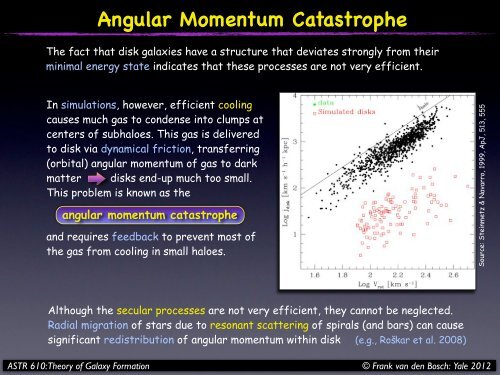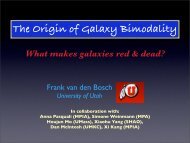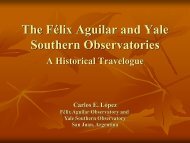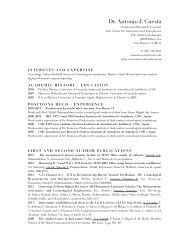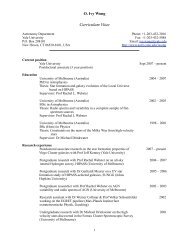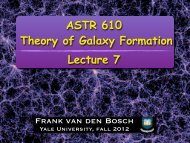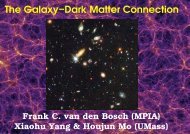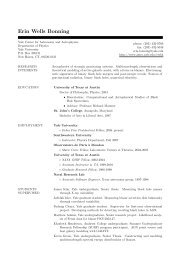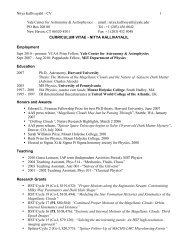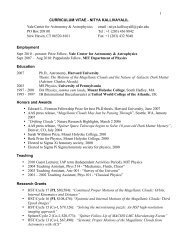ASTR 610 Theory of Galaxy Formation Lecture 16
ASTR 610 Theory of Galaxy Formation Lecture 16
ASTR 610 Theory of Galaxy Formation Lecture 16
Create successful ePaper yourself
Turn your PDF publications into a flip-book with our unique Google optimized e-Paper software.
Angular Momentum Catastrophe<br />
The fact that disk galaxies have a structure that deviates strongly from their<br />
minimal energy state indicates that these processes are not very efficient.<br />
In simulations, however, efficient cooling<br />
causes much gas to condense into clumps at<br />
centers <strong>of</strong> subhaloes. This gas is delivered<br />
to disk via dynamical friction, transferring<br />
(orbital) angular momentum <strong>of</strong> gas to dark<br />
matter disks end-up much too small.<br />
This problem is known as the<br />
angular momentum catastrophe<br />
and requires feedback to prevent most <strong>of</strong><br />
the gas from cooling in small haloes.<br />
Source: Steinmetz & Navarro, 1999, ApJ, 513, 555<br />
Although the secular processes are not very efficient, they cannot be neglected.<br />
Radial migration <strong>of</strong> stars due to resonant scattering <strong>of</strong> spirals (and bars) can cause<br />
significant redistribution <strong>of</strong> angular momentum within disk (e.g., Roškar et al. 2008)<br />
<strong>ASTR</strong> <strong>610</strong>: <strong>Theory</strong> <strong>of</strong> <strong>Galaxy</strong> <strong>Formation</strong> © Frank van den Bosch: Yale 2012


